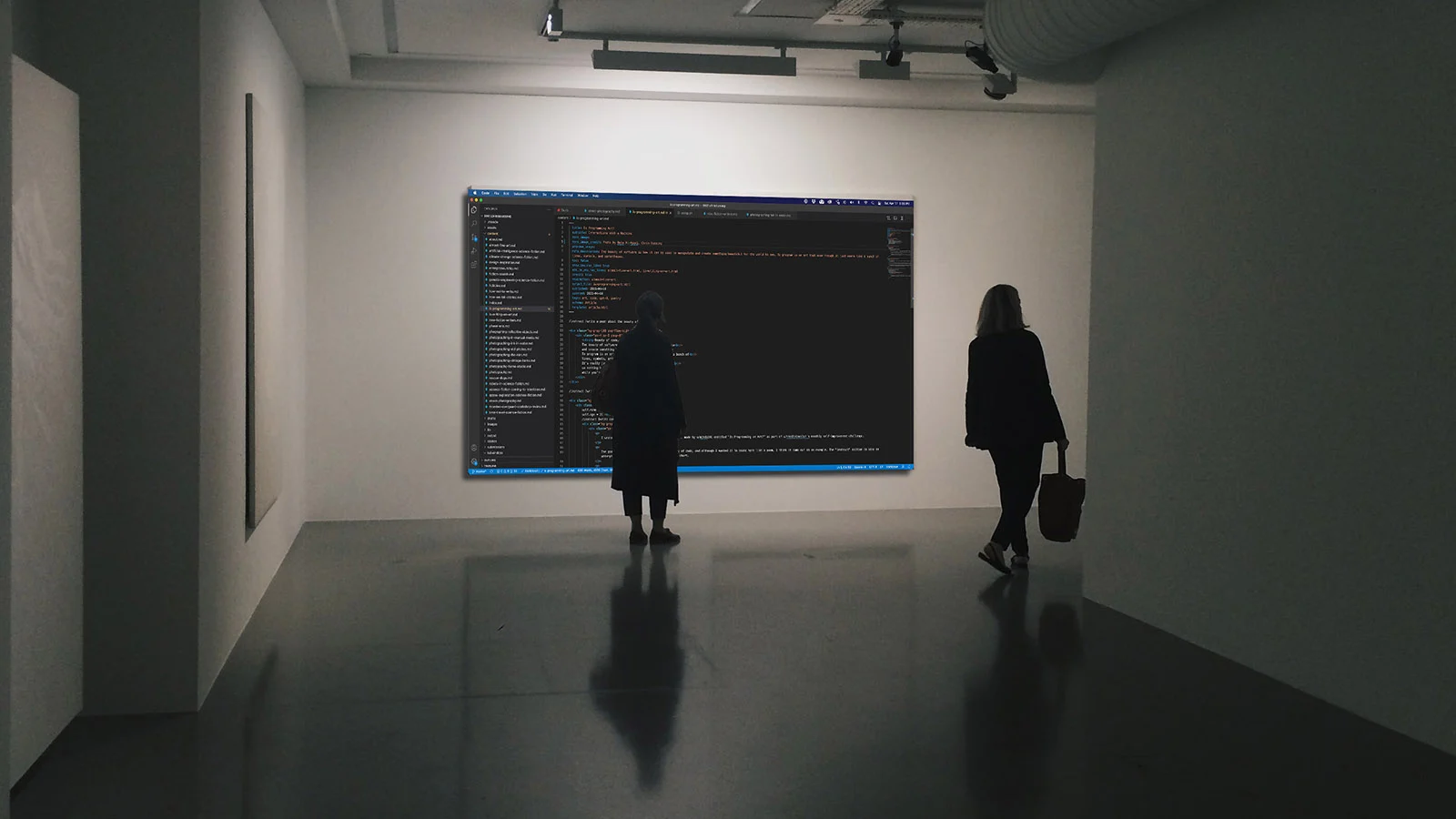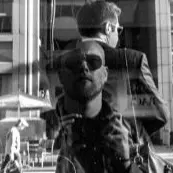Digital Art
The world of art changes as it is impacted by technology. Photography was the great disruptor of the 19th century. It allowed works of art that simply could not have existed before its invention. Technologies change the very definition of ‘art’. You are reading the next epochal shift now, the collaboration of man and machine in the act of creation. Artificial Intelligence is here. What will be different about artists made by machines than humans who make them now?
NLP Text Generation
Examples of Machine Generated Language I have produced with GPT-3.
Digital Sound
I am exploring music and sound art.
3D
As well as studying 3D.
Digital art
Digital art is an umbrella term used to describe any art work produced digitally. Artists can use software like Adobe Photoshop to edit pictures or create a digital painting from scratch. However, digital artists are often confused about what exactly constitutes digital art. This article explains how digital artists define themselves and what makes their creations stand out.
What Is Digital Art
Digital art is an artistic medium used to make visual creations with digital technology. In general, it refers to the use of computers, software, and related devices to produce artwork. This type of work is often referred to as computer-generated imagery (CGI).
The term “digital art” is sometimes used interchangeably with CGI, but technically speaking, digital art encompasses much more than CGI. It includes all kinds creative works that involve digital technology. Examples include interactive art, animation, video games, virtual reality, 3D printing, augmented reality, artificial intelligence, robotics, and many others.
Is Digital Art Real Art?
The debate over whether digital art is real art continues to rage online. While some people believe it is, others argue that there is no such thing as digital art. This article will explain why both sides are wrong.
Digital art is just as valid and important as traditional art. Both require creative thinking and skill. They both use similar materials and techniques. In fact, there is even a term for digital artists called “digital painters.”
There is no difference in the processes of creating either form of art. A digital artist uses software like Photoshop or Illustrator to make his or her work. An analog artist uses paint and canvas to do the same thing.
Both forms of art are equally valid. If you enjoy one, you’ll probably enjoy the other.
Is Digital Art More Popular?
Digital art is easier to share, publish, and view online than traditional art. This makes it more popular than its analogue counterpart. People like the convenience of being able to post images instantly, without having to wait for prints or paintings to dry. Also, many people prefer digital art over physical art because they think it looks better. They don’t want to see brush strokes or paint splatters on their phone screens.
New technologies allow us to create art in ways we never could before. For example, you can now use 3D printers to make sculptures out of plastic, metal, wood, and even food. You can also use virtual reality headsets to experience different worlds. And there are plenty of apps that let you draw, sketch, paint, photograph, and animate anything you can imagine.
How Is Digital Art Made?
Digital art is a type of image that uses computer technology to manipulate photographs, images, video footage, and sound recordings into works of art. In fact, there are many different types of digital art. Some artists use software such as Adobe Photoshop to edit photos and make paintings. Others work with programs like Illustrator and After Effects to design animations and motion graphics. Still others use apps like Instagram to take pictures and turn them into artwork.
Whether you’re creating digital art because you want to express yourself creatively or professionally, here are some tips to help you succeed.
- Start With a Good Photo
The most important thing to remember about digital art is that good quality is essential. You’ll want to start with a photo that’s clear and sharp. If you don’t have one, try taking a picture of something simple, like a piece of paper or a pencil drawing. Then, crop out the background and add text over the top. This way, you won’t have to spend hours trying to find a suitable photo.
- Add Text
Once you’ve got a photo that looks great, you can move onto adding text. There are several ways to do this. For example, you could draw the words directly over the photo or write them in the margins. Or, you could use a program like Photoshop to add text.
- Use Colorful Brushes
Is Digital Art Easier for Beginners?
Digital art is becoming increasingly popular among artists because it requires little skill and no expensive equipment. But digital art is much easier to learn than traditional art. In fact, many people are learning how to make digital art just to keep up with the latest trends.
How To Turn Digital Art into Physical Art
Artists use digital tools to create artwork that is both beautiful and unique. This class explores the process of turning digital art into physical art. Students will learn how to work with multiple mediums including paint, pencil, clay, wood, metal, glass, fabric, paper, cardboard, and more. All materials are included in the cost of tuition.
This class is perfect for anyone interested in learning new skills or those looking to expand their artistic abilities.
How to Make Money Selling Digital Art
Digital art includes everything from photos and videos to illustrations, designs, and even 3D models. You can make money selling it just like you do physical goods. Here are some ideas to help you start making money today.
Pros of Selling Physical Art
There are many ways to sell art. Some people prefer selling prints while others like to sell original artwork. Artists can sell art directly to customers or use galleries to do it for them. However, there are some advantages to selling physical art products online. Here are three reasons why you might want to consider selling physical art online.
- Reach A Wider Audience
Online sales allow artists to reach an even larger audience than traditional methods. This allows artists to connect with potential buyers around the world. In addition, digital platforms make it easier to track customer feedback and provide better customer service.
- Save Time
The Internet makes it easy to find out about upcoming exhibitions, events, and auctions. You don’t have to go door to door anymore. Instead, you can simply look up what you’re interested in online. When you buy online, you save money because you avoid paying shipping costs.
- Sell More
When you sell physical art products online, you can increase your profits. For example, you can offer discounts and free shipping options. If you’re able to give away freebies, you’ll attract more attention. Customers love getting something for nothing.
Cons of Selling Physical Art (And How to Overcome Them)
The digital age has revolutionized how we consume media. Nowadays, it seems like there’s always something to watch, listen to, read, play, or buy online. As such, many people are turning away from traditional methods of consuming art. But while some artists are embracing the internet to connect with fans, others are finding themselves struggling to make ends meet. In fact, according to the National Association of Visual Arts Organizations (NAVAO), only 15% of visual arts organizations report having annual revenue of $10 million or more. This means that most artists rely on income generated from galleries and museums, which often charge high fees for admission and exhibit space.
While selling physical art products online might seem appealing because it allows you to bypass the gallery system, there are several drawbacks to doing so. For example, you won’t earn money from each sale, and you’ll likely face stiff competition from larger companies that offer similar products. Additionally, there are certain costs associated with shipping and storing inventory, which could eat into profits. If you decide to go down this path, here are five things you should know about selling physical art online.
- You Won’t Earn Money From Each Sale
When you sell physical art products online, you don’t receive payment for every product sold. Instead, you typically pay a commission based on a percentage of the total sales price. While this might sound good, it’s important to remember that the commission rates vary widely depending on the type of product being sold. Some items, such as prints, canvas paintings, and posters, tend to carry lower commissions compared to other types of art.
- Your Competition Will Be Bigger Than Ever
If you choose to sell physical art products via ecommerce platforms, you’re competing against large corporations that have deep pockets. These companies typically invest heavily in marketing campaigns, which allow them to spend more money per customer than smaller businesses. They also have access to better distribution networks, which makes it easier for them to ship products quickly.
- Shipping Costs Could Be High
NFTs Are Shaking Up the Art World But They Could Change So Much More
Artists are getting into the crypto game.
For the first time ever, you can now purchase a piece of artwork with cryptocurrency. And it’s called a Non-Fungible Token (NFT). There are no fungible tokens out there — those are the ones where anyone can use the same token multiple times. With NFTs, you can make sure that each one is unique. You can even customize them further.
So what does this mean for artists? Well, it’s pretty simple. Instead of selling a painting to someone, you could sell them a painting. Each one is different. This allows artists to charge more because they aren’t competing against other paintings. It also lets buyers know exactly what they’re buying.
The problem with most digital currencies is that they don’t actually exist. For example, Bitcoin doesn’t exist anymore. Ethereum isn’t really worth anything either. In fact, some people say that cryptocurrencies are just a scam. However, NFTs do exist. They’re real things. They’re physical objects.
This is why NFTs are shaking up the art world.
Digital Art Education
The digital arts are defined as those media used to communicate information, ideas, and feelings visually. This includes graphic design, web development, illustration, animation, video editing, photography, and others. These skills are being taught in schools across America and around the world. In fact, there are over 2 million students enrolled in some sort of digital arts education program.
You will learn how to use various types of software, hardware, online tools, and social networks to create new works. We will explore the history of digital art, examine the role it plays in our society today, and discuss the future of digital art education.
Digital Painting
The term “digital painting” refers to a style of artistic creation that combines traditional media such as oil paints, watercolors, pencils, pens, charcoal, etc., with digital tools. Digital art is often referred to as computer graphics, electronic art, computer illustration, or simply CGI.
In recent years, artists have been creating digital paintings that are intended to look hand drawn, and many people believe that it is impossible to tell whether a piece was digitally painted or not. This type of work is sometimes called “hybrid art”.
Some digital art allows the audience or viewer to interact with the artwork. For example, some digital art features interactive elements such as buttons, sliders, and scroll bars. These types of works are sometimes referred to as “interactive art”, “augmented reality”, “immersive art”, “virtual reality”, or “mixed reality”.
Harold Cohen is one artist who continues to develop new ways to use digital technologies to create digital art. In his latest project, he used 3D printing to make a sculpture that looks like a real human face. He says that he hopes that others will try to come up with similar ideas.
Adobe Photoshop
Photoshop is one of the best programs ever made. If you want to learn how to use it, then here are some tips to help you get up and running quickly.
Illustrator
Digital art is different from regular arts. There are many ways you can create digital art. Some people think that digital artists are just like traditional artists. They believe that there is no difference between digital and traditional art. But others think that it’s more important what the artist does rather than where he/she works.
Artists are worried about copyright issues. In fact, some artists don’t want to sell their work online because of the fear of losing control over their creations. Many artists even consider themselves “illustrators”.
Digital 3D Art
The term “digital art” was coined in the 1980’s by Harold Cohen. He defined it as any type of artwork produced with digital media. This includes traditional 2D work like paintings, drawings, photographs, etc., but also includes animation, video games, virtual reality experiences, augmented reality experiences, and even some types of music.
Harold Cohen died in 2009, but his definition lives on. In fact, he passed away just days before Apple announced that they had acquired the company behind Sketchbook Pro, one of the most popular tools for creating digital art.



